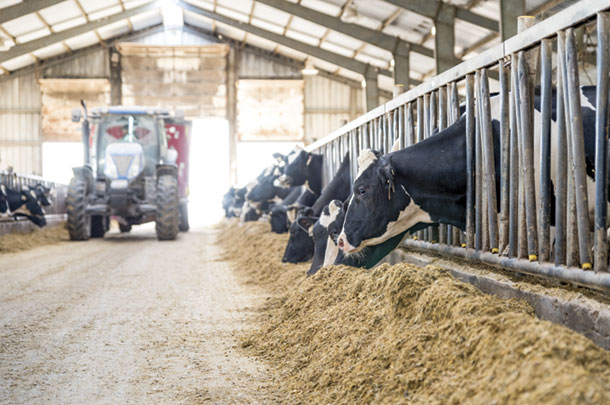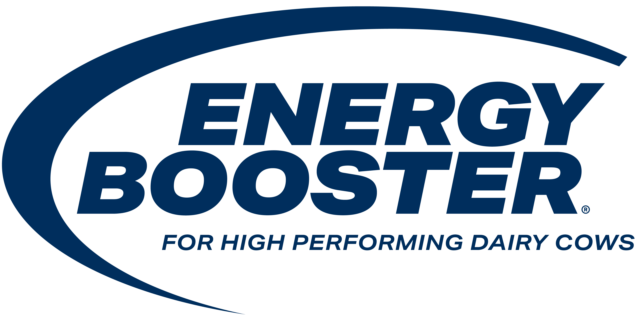A targeted ration approach allows you to prioritize and invest in more profitable, early lactation cows and cut back on less profitable cows later in lactation.
Here are a few areas to consider before implementing this ration approach:
Grouping strategy
The biggest question when starting targeted rations is: How many rations do I need? Determining the number of rations needed starts with identifying your herd’s goals.
Evaluate these factors when determining your grouping strategy:
- Days in milk (DIM)
- Age distribution of the herd
- Milk production goals
- Facilities
- Labor availability
- Reproductive program management
With these considerations in mind and the help of your nutritionist, you can determine what groups make the most sense to maximize milk production at each lactation stage.

Keep in mind: How you group your cows isn’t a set-it-and-forget-it process. Look ahead two to three months and plan for adjustments. For example, if you have a large group calving in a few months, you may need to move cows through the ration groups more quickly to manage stocking density.
Fresh cow diet
Early lactation is the best opportunity to maximize milk production. A tailored diet can get cows started strong and help avoid early lactation health issues. Also, higher start-up milk (zero to 30 DIM) generally leads to greater peak milk.
A separate fresh cow diet for the first 30 to 40 DIM allows you to invest in nutrients, technologies and feed additives specific to fresh cows. Early lactation cows benefit from these the most, and a targeted diet can help you deliver what they need without wasting dollars on later-lactation cows that will likely not give a good return.
Fresh cows have lower feed intake than later-lactation cows at the same production level. A more nutrient-dense diet of key nutrients helps support milk production, even with the reduced intake.
First-lactation fresh cow diet
Consider a separate first-lactation fresh cow diet either for the first 30 to 40 DIM or until mid-lactation, if you have space and labor available. First-calf heifers still have nutrient requirements for growth, on top of early lactation nutrient needs. A higher-protein diet can help first-lactation cows continue growing to achieve their full potential for rumen capacity, feed efficiency and milk production.
First-lactation cows are also at a higher risk for reduced feed intake. They’re at a disadvantage in a competitive environment with older cows or overstocked facilities. A separate feeding group for first-lactation fresh cows can help increase feed intakes and milk production.
Peak to mid-lactation diet
Supporting cows during the peak milk phase is essential to optimize milk production income. For every additional pound of peak milk produced per cow, you could gain 250 pounds more milk per cow over the entire lactation.
Peak cows have significantly higher intakes than cows less than 30 DIM at the same production level. A separate peak to mid-lactation diet allows a reduction in the nutrient density while still supporting milk production with higher feed intakes. Cows can remain in this feeding group until 150 to 200 DIM, depending on the production level, diet milk support and grouping strategy.
A separate peak cow diet also allows you to remove or reduce some of the higher-cost feed additives to optimize the diet for increased intakes and higher peak milk.
Late-lactation diet
The most important factor to adequately support fresh and peak cows is energy density. However, a nutrient-dense ration during late lactation can result in overconditioned cows entering the dry period. Cows with a body condition score of 3.5 or higher at calving are at greater risk for fresh cow metabolic diseases, especially ketosis and fatty liver.
Implementing a separate late-lactation diet allows you to reduce the energy density by removing higher-cost additives and better manage body reserves for cows entering the dry period without impacting fresh and peak cow milk production.
Management considerations
Targeted rations are only successful if management practices are on par. Evaluate cow movement and water access before diving in.
Feeding targeted rations comes with more pen moves. Plan to efficiently move cows through the pens to reduce stress and support adequate resting time. Fresh cows shouldn’t be away from their pens for more than three hours a day, including treatment, bedding and scraping times. Cows past 30 DIM shouldn’t be away from the lying area for more than four hours a day.
Constant clean water access is also important with a targeted feeding approach as cows move through multiple pens. Ensure cows have adequate space and access to water in all lying and feeding areas.
Targeted rations can help you be more strategic with your nutritional investment and help improve nutritional efficiency. Work with your local nutritionist to put together a targeted ration strategy that works for your herd. ![]()
PHOTO 1: Different rations for different stages of lactation can help bring efficiency to your herd.
PHOTO 2: Deliver nutrients when cows need it most to maximize production. Courtesy photos.
References omitted but are available upon request. Click here to email an editor.

-
Kevin Dill
- Senior Nutritionist
- Purina Animal Nutrition
- Email Kevin Dill






